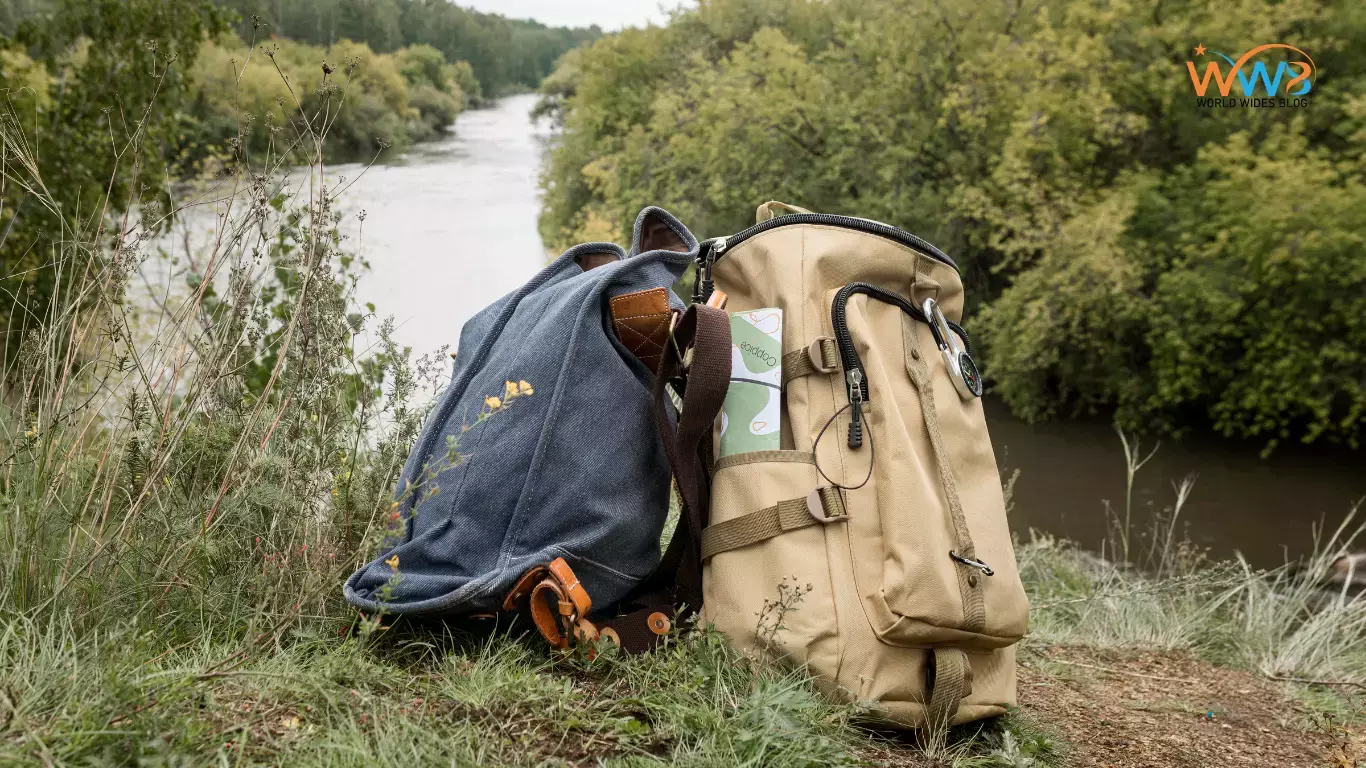Choosing the right day hiking backpack is essential for a great outdoor adventure. In 2024, many new and innovative options will be available. The perfect backpack should be comfortable, durable, and have enough space for your gear.
This article will guide you through the best day hiking backpacks of the year. We will highlight their key features and benefits, making it easy to find the right one.
Whether you are an experienced hiker or just starting, our recommendations will help ensure your hikes are enjoyable and hassle-free.
What size backpack is best for a day hike?
Notice Title
A backpack with a 15- to 30-liter capacity is generally ideal for a day hike. This size range provides enough space to carry essentials such as water, food, extra clothing, a first aid kit, and other personal items without being too bulky or heavy.
Here’s a quick breakdown:
- 15-20 liters: Suitable for short hikes where you only need essentials.
- 20-25 liters: Great for medium-length hikes, offering additional space for extra gear or clothing.
- 25-30 liters: Ideal for longer day hikes, providing ample room for more supplies and gear, especially if you need to carry items for variable weather conditions or additional safety equipment.
Choosing the right size depends on the length of your hike, weather conditions, and personal needs.
How much should a good day hiking backpack cost?
Notice Title
The cost of a good day hiking backpack can vary widely depending on brand, materials, and features. Generally, you can find quality day hiking backpacks ranging from $50 to $200 or more.
- Budget-friendly: Basic day hiking backpacks made from durable materials like nylon or polyester can cost between $50 to $100. These packs often provide sufficient comfort and functionality for casual hikers.
- Mid-range: Backpacks priced between $100 and $150 typically offer more advanced features, such as enhanced comfort with padded straps and back panels, multiple compartments for organization, and sometimes water resistance.
- High-end: Premium day hiking backpacks, priced from $150 to $200 or more, often feature lightweight yet robust materials, advanced suspension systems for better weight distribution, specialized compartments for hydration systems, and additional durability features like reinforced stitching or weatherproof coatings.
Ultimately, your price should reflect the features and quality you prioritize based on your hiking needs and preferences.
What features should I look for in a day hiking backpack?
Notice Title
When selecting a day hiking backpack, consider the following features to ensure comfort, functionality, and convenience:
1. Comfort and Fit:
– Adjustable Straps: Padded shoulder straps, sternum straps, and hip belts for even weight distribution.
– Ventilated Back Panel: Helps to keep your back cool and dry.
– Proper Size: Choose a size that fits your torso length and waist size.
2. Capacity:
– Volume: Typically, 20-35 liters is suitable for day hikes, but choose a larger size if you carry extra gear like camera equipment or winter layers.
3. Weight Distribution:
– Hip Belt: Transfers weight from shoulders to hips.
– Load Lifters: Straps that help pull the pack’s weight closer to your body.
4. Accessibility:
– Multiple Compartments: These are for organized storage and easy access to essentials.
– External Pockets: Quick access to snacks, maps, or a phone.
– Side Pockets: For water bottles or other quick-grab items.
5. Hydration Compatibility:
– Hydration Reservoir Sleeve: Internal sleeve to hold a water bladder.
– Hose Port and Clip: Routing the hydration hose and securing it on the shoulder strap.
6. Durability:
– Material: Made from durable, water-resistant, or waterproof materials.
– Reinforced Points: Strengthened stress points to prevent tearing.
7. Weather Protection:
– Rain Cover: Built-in or attachable rain cover for wet conditions.
8. Attachment Points:
– Trekking Pole/Ice Axe Loops: For securing hiking poles or ice axes.
– Gear Loops and Daisy Chains are used to attach additional gear externally.
9. Design and Features:
– Compression Straps: These are used to cinch down the load and keep it stable.
– Zipper Quality: Durable and easy-to-use zippers.
– Reflective Elements: This is for increased visibility in low light.
10. Specialized Features:
– Hip Belt Pockets: These are for easy access to small items like snacks or a camera.
– Top Lid/Brain: Extra compartment at the top of the pack for additional storage.
– Sleeping Bag Compartment: Optional for those who might do occasional overnights.
Considering these features, you can find a day hiking backpack that meets your comfort, capacity, and convenience needs.
Are there specific backpacks designed for different types of day hikes?
Notice Title
Specific backpacks are designed for different types of day hikes, each catering to the unique requirements of various hiking activities. Here are some examples:
1. Standard Day Hiking Backpacks
- Usage: General day hikes on well-established trails.
- Features: Comfortable fit, multiple compartments, hydration reservoir compatibility, and moderate capacity (20-35 liters).
2. Technical Daypacks
- Usage: More challenging hikes, including technical terrain or light scrambling.
- Features: Additional gear loops for climbing equipment, reinforced materials, and enhanced stability features like load lifters and sternum straps.
3. Ultra-light Daypacks
- Usage: Fast and light hiking, often for minimalists prioritizing speed and efficiency.
- Features: Lightweight materials, minimalist design, limited compartments, and reduced capacity (15-25 liters).
4. Hydration Packs
- Usage: Short hikes, trail running, or biking where hydration is a primary concern.
- Features: Built-in hydration reservoirs, streamlined design, limited extra storage, and snug fit.
5. Winter Daypacks
- Usage: Day hikes in snowy or cold conditions.
- Features: Insulated hydration sleeves, attachment points for snowshoes or crampons, extra capacity for carrying additional layers, and durable materials.
6. Photography Daypacks
- Usage: Day hikes for photographers carrying camera equipment.
- Features: Padded compartments for cameras and lenses, tripod attachment points, and accessible design for quick gear retrieval.
7. Kid-Friendly Daypacks
- Usage: Day hikes with children.
- Features: Smaller size, lightweight, bright colors for visibility, and easy-access pockets for snacks and toys.
8. Adventure Racing/Trail Running Packs
- Usage: Long-distance trail running or adventure races.
- Features: Extremely lightweight, hydration compatibility, ergonomic fit for running, and minimal storage focused on essentials.
9. Women-Specific Daypacks
- Usage: Day hikes tailored to fit the female body.
- Features: Contoured shoulder straps, shorter torso lengths, and hip belts designed to fit women’s hips.
10. Travel Daypacks
- Usage: Day hikes while traveling, often doubling as carry-on or urban daypacks.
- Features: Versatile design, security features like lockable zippers, and compact size for easy stowing.
When choosing a day hiking backpack, consider the specific requirements of your hike. Evaluate the terrain, weather conditions, gear needs, and personal preferences to select a pack with the right features for a comfortable and enjoyable hike.
How do I properly fit and adjust a day hiking backpack?
Notice Title
Properly fitting and adjusting a day hiking backpack is crucial for comfort and efficiency on the trail. Here’s a step-by-step guide to help you achieve the perfect fit:
Step 1: Measure Your Torso Length
– Locate the C7 Vertebra: This is the bony bump at the base of your neck.
– Find the Iliac Crest: This is the top of your hip bone. Draw an imaginary line between the top of your hip bones.
– Measure: Measure the distance between these two points. This is your torso length.
Step 2: Choose the Right Size Backpack
– Refer to the manufacturer’s size chart to select a backpack that matches your torso length. Some backpacks come in multiple sizes, while others have adjustable suspension systems.
Step 3: Adjust the Backpack
1. Loosen All Straps: Start with all the straps (shoulder, hip, sternum, load lifters) loosened.
2. Put on the Backpack: Put the backpack on and lean forward slightly.
Step 4: Adjust the Hip Belt
– Position the Hip Belt: Center the hip belt over your hip bones (iliac crest). The padding should wrap around your hips, not your waist.
– Tighten the Hip Belt: Pull the straps forward to tighten. The majority of the pack’s weight should rest on your hips.
Step 5: Adjust the Shoulder Straps
– Snug the Shoulder Straps: Pull the shoulder straps down and back to tighten them. They should be snug but not overly tight. The straps should contour to your shoulders, and the pack should be pulled close to your back.
– Check the Shoulder Strap Anchor Points: They should be 1-2 inches below the top of your shoulders.
Step 6: Adjust the Load Lifters
– Position the Load Lifters: These straps are at the top of the shoulder straps.
– Tighten the Load Lifters: Pull them to an angle of about 45 degrees to bring the pack closer to your body and help balance the load.
Step 7: Adjust the Sternum Strap
– Position the Sternum Strap: Move it up or down to a comfortable height across your chest.
– Tighten the Sternum Strap: Pull it tight enough to keep the shoulder straps in place but not so tight that it restricts your breathing.
Step 8: Fine-Tune and Balance the Load
– Check for Comfort: Walk around and make adjustments as needed. The pack should feel stable and comfortable.
– Balance the Load: Distribute the weight evenly inside the pack. Heavier items should be close to your back and centered between your shoulders.
Additional Tips
– Check Frequently: Readjust straps periodically during your hike as needed, especially after long breaks.
– Use Compression Straps: Tighten the pack’s compression straps to stabilize the load and minimize movement.
– Pack Smart: Place frequently used items in accessible pockets or compartments.
Following these steps will ensure that your day hiking backpack fits properly and provides maximum comfort and support on your adventures.
Essential Gear and Tips for Safe Day Hiking
Notice Title
Here’s a list of the vital information from the article on day hiking essentials:
Backpack
– Gregory Jade 38 L backpack
– Comfortable with hip straps and big pockets
– Space for a water bladder and hose
| The 10 Essential Systems |
| 1 | Extra water: | Carry a Sawyer water filter |
| 2 | Extra food: | More than you think you’ll need |
| 3 | Extra clothes: | Layers and rain gear |
| 4 | Illumination: | Headlamp with extra batteries |
| 5 | Sun protection: | Sunscreen, sunglasses, hats |
| 6 | First aid kit: | Comprehensive, not just bandaids |
| 7 | Knife or Multitool: | Small Leatherman |
| 7 | Emergency Shelter: | Emergency blanket or tarp |
| 9 | Fire: | Lighter, matches, fuel, and stove |
| 10 | Navigation: | Map and compass, GPS device |
Two is One, One is None
– Backups for essential equipment:
– Extra batteries for GPS
– Water purification tablets
Additional Essentials
– Water:
– Use a water reservoir with a hose
– Carry a small water filter
– Clothing:
– Patagonia hooded jacket
– Rain jacket
– Illumination:
– Headlamp with extra batteries
– Navigation:
– Backup map and compass
Communication
– Emergency devices:
– Personal Locator Beacon (PLB)
– Garmin InReach Mini for two-way messaging and SOS
Signaling
– Options:
– Signaling mirror
– Bright-colored signaling panel
– Built-in whistles on backpack straps
Fun Items
– Binoculars: To observe wildlife and nature
– Camera: For videos and photos
– Paracord: Useful for emergencies and various uses
– Trekking Poles: Helpful on steep trails
– Bear Spray: Depending on the location (e.g., mountains of Montana)
Beginner Hiking Tips
– Start with a short, easy hike
– Inform someone of your plans
– Check the weather and be prepared for changes
– Listen to your body and take breaks as needed
Other Tips
– Pack more snacks than needed
– Be prepared for unpredictable mountain weather
– Learn to use a map and compass
This concise summary covers the main points and essentials for day hiking, as discussed in the article.







